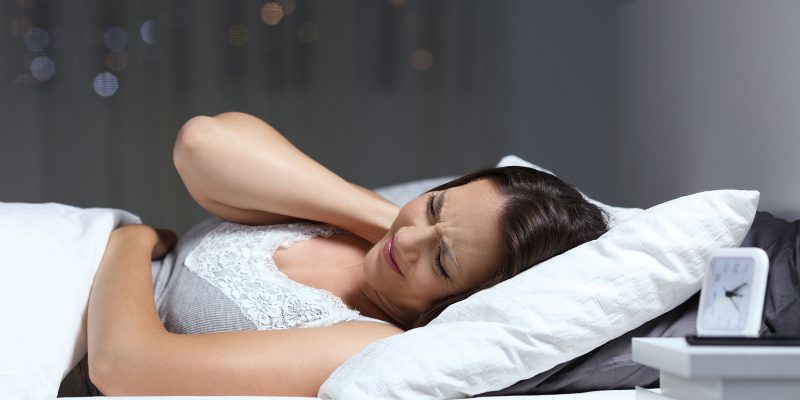If you have low back pain, you probably know how difficult it can be to find a comfortable sleeping position. However – is your comfortable sleeping position potentially being counterproductive for long term relief and healing?
For those who experience lower back pain, falling asleep can be a difficult task. Adding insult to injury is a feeling of fatigue and tiredness that can heighten your sensation of discomfort and pain throughout the following day.
Not all sleeping positions are ideal for good spinal health. Sometimes in the search for a good night’s sleep, you may place your body in a position that could potentially further aggravate your condition.

Here are some great tips to direct you toward a good night’s sleep for both you and your spine:
- Always try to choose a position that maintains the natural curvature of your spine; as opposed to ones that stress and reduce these curves – which may place additional pressure on your neck, hips and upper back.
- Sleep on your back. This is great for people who experience lower back pain as it evenly distributes your body weight – in addition to ensuring good frontal alignment of your whole spine.
- Place a pillow either under your knees (if you sleep on your back) or in between your knees (if you sleep on your side). The addition of a pillow will help foster the normal curvature of your lumbar spine and reduce pressure and discomfort through this region.

- If you are a side sleeper, make sure your pillow height is high enough to support the horizontal alignment of the spine. Too high, or too low, may unnecessarily stress the cervical spine (neck) and its surrounding musculature.

One key piece of advice you should start to implement immediately is to avoid sleeping on your stomach.
Sleeping on your stomach is horrible for your spinal health for the following two reasons:

- It places unnecessary pressure on your neck due to twisting your head and the straining of your lower back.
- Leaving your head in a rotated position for long periods of time (often more than 7 hours when sleeping) strains the surrounding cervical (neck) musculature, predisposing the spine to subluxate as a compensatory mechanism. Subluxations are spinal misalignments which result not only in pain and discomfort, but also influence the relationship between the spine and the nervous system. A common presentation to our practice is lower cervical spine subluxations in conjunction with a condition called ‘torticollis’.
If you are tired of having to put up with pain and want to identify the cause, rather than mask the symptoms, then we may be able to help.
At Sims & Finn our Chiropractors utilise Neuro-Structural Correction, the purpose of which is to correct the underlying shifts in the spine that are typically responsible for many symptoms- such as back pain and discomfort.
Our chiropractors are more than happy to answer any questions you have regarding the health of your spine and the relationship it has with your nervous system.
To make an appointment, please either book online via our website, or call our friendly staff.
Sims & Finn Chiropractic
52 Stud Road, Dandenong 3175
@simsfinnchiropractic

